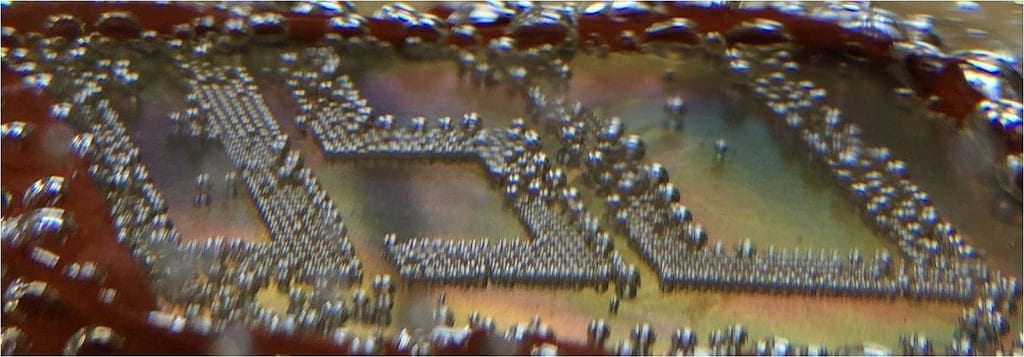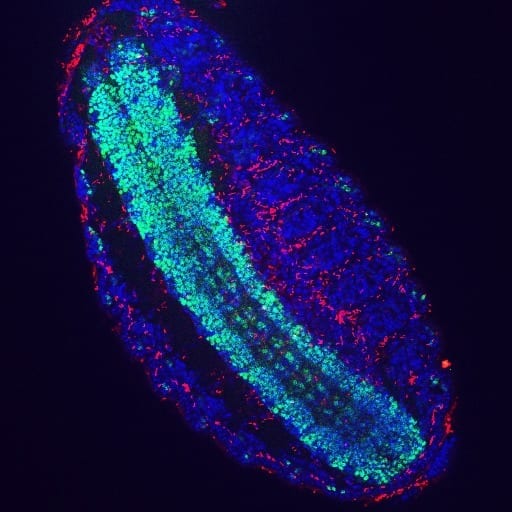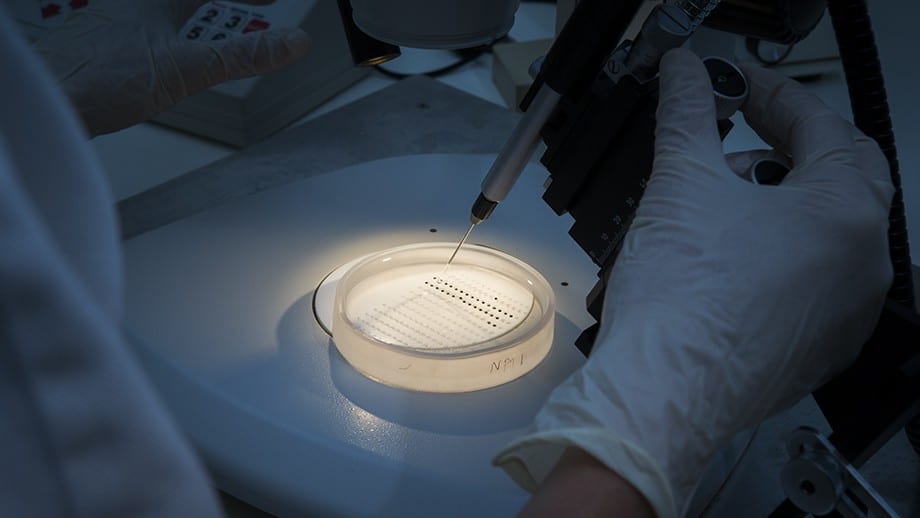
Engineers at Oregon State University have found a new way to induce and control boiling bubble formation, that may allow everything from industrial-sized boilers to advanced electronics to work better and last longer.
Advances in this technology have been published in Scientific Reports and a patent application filed.
The concept could be useful in two ways, researchers say – either to boil water and create steam more readily, like in a boiler or a clothing iron; or with a product such as an electronics device to release heat more readily while working at a cooler temperature.
“One of the key limitations for electronic devices is the heat they generate, and something that helps dissipate that heat will help them operate at faster speeds and prevent failure,” said Chih-hung Chang, a professor of electrical engineering in the OSU College of Engineering. “The more bubbles you can generate, the more cooling you can achieve.
“On the other hand, if you want to create steam at a lower surface temperature, this approach should be very useful in boilers and improve their efficiency. We’ve already shown that it can be done on large surfaces and should be able to scale up in size to commercial use.”
The new approach is based on the use of piezoelectric inkjet printing to create hydrophobic polymer “dots” on a substrate, and then deposit a hydrophilic zinc oxide nanostructure on top of that. The zinc oxide nanostructure only grows in the area without dots. By controlling both the hydrophobic and hydrophilic structure of the material, bubble formation can be precisely controlled and manipulated for the desired goal.
This technology allows researchers to control both boiling and condensation processes, as well as spatial bubble nucleation sites, bubble onset and departure frequency, heat transfer coefficient and critical heat flux for the first time.
In electronics, engineers say this technology may have applications with some types of solar energy, advanced lasers, radars, and power electronics – anywhere it’s necessary to dissipate high heat levels.
In industry, a significant possibility is more efficient operation of the steam boilers used to produce electricity in large electric generating facilities.
Learn more: Engineers create a better way to boil water – with industrial, electronics applications
The Latest on: Boiling bubble formation
[google_news title=”” keyword=”Boiling bubble formation” num_posts=”10″ blurb_length=”0″ show_thumb=”left”]
via Google News
The Latest on: Boiling bubble formation
- More than seafood goes in the boiling pot at this new festival on New Orleans lakefronton May 6, 2024 at 4:30 am
Part of the success of the National Fried Chicken Festival is the way it presents so many different possibilities around one idea, from traditional to creative to influences from different ...
- How a Rolling Boil Is Different From Simmeringon May 5, 2024 at 6:00 am
Learn how to achieve a rolling boil and when to use this essential technique. Oskanov / One day, our ancestors learned that fire creates heat—and we’ve been boiling water ever since. There’s no doubt ...
- Simmer Vs. Boil: Is There Really A Difference?on May 2, 2024 at 2:14 pm
The key difference between simmering and boiling is the size of the bubbles. Courtney West One of the most basic cooking skills is boiling water. Once you've achieved that, a world of possibilities ...
- Recipe: For a bright spring dessert, top individual lemon puddings with zesty rhubarb compoteon April 30, 2024 at 5:15 am
As soon as you see big boiling bubbles appear on the surface, remove the pan from the heat and pass the mixture through a mesh sieve for the smoothest results. For a clean look, pipe the pudding ...
- Bubble Formation at an Orifice in a Fluidized Bedon April 28, 2024 at 5:00 pm
WHEN a gas is passed through a bed of solid particles supported by a porous distributor at a flow-rate sufficient to fluidize the bed, gas bubbles can usually be seen travelling up through the bed ...
- High-fidelity model for designing efficient thermal management surfaceson April 26, 2024 at 9:36 am
The top image shows the schematic of liquid film boiling, where both vibrant bubbles inside the liquid film and the evaporation atop dissipate the heat. The bottom left image shows the ...
- Exploring why viruses cause lesions and rasheson April 1, 2024 at 1:33 pm
Other times, the formation of lesions on the skin is part ... Evidently, there is no single reason why viruses cause the skin to bubble and boil, and for the most part, the reasons are unknown.
- The Air Bubble Mistake You Need To Avoid When Canning Foodon November 13, 2023 at 1:27 am
"If jars are overfilled, the contents may siphon or boil out during processing ... preventing the formation of a vacuum seal." For the longest-lasting and tastiest product, you should always remove ...
- Journey into Lechuguillaon March 23, 2022 at 11:38 pm
Other lakes followed in the Lebarge Borehole, some of them lined with bulbous, milky mounds of calcite unlike any cave formation I had ... the flame and set about boiling water for our breakfasts.
- Boiling Pointon April 10, 2021 at 7:44 am
On the other hand, boiling is a process in which molecules anywhere in the liquid escape, resulting in the formation of vapor bubbles within the liquid.
via Bing News










